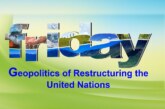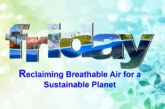Dr. Arvind Kumar*
On average, 1,000,000 plastic bottles are bought every minute worldwide, and less than half of all plastic bottles end up getting recycled, and besides, plastic water bottles release toxic chemicals when they get decomposed.
From deep-sea sediment to Mount Everest, no area on the planet Earth is left untouched by plastic pollution. With the rate of plastic production witnessing exponential growth – faster than any other material – there have also ensued severe environmental consequences. Currently, according to UN Environment Programme (UNEP), nearly 300 million tonnes of plastic waste are produced annually, with eight million tonnes finding their way into the world’s oceans. And if things are allowed to go on at this rate, the ocean may contain more plastic than fish by volume, by 2050. Cautioning that of all the plastic waste ever produced, only 9% gets recycled, 12% incinerated, and the remaining 79% gets accumulated in landfills and natural environment, scientists warn that over time, these accumulated materials breakdown into micro-plastics that facilitate additional pollutants into the food chain, freshwater systems, and the air.
Magnitude of Problem
The menace of plastic pollution has assumed serious dimensions as it is polluting oceans, affecting biodiversity, and impacting human health. Admittedly, the name ‘plastic’ originates from the Greek plastikos, meaning capable of being shaped or moulded; nonetheless, the material which seemed to afford so much because of its being flexible is now plaguing the world. On average, 1,000,000 plastic bottles are bought every minute worldwide, and less than half of all plastic bottles end up getting recycled, and besides, plastic water bottles release toxic chemicals when they get decomposed.

Scientists have time and again averred that chemicals used in plastic production are often fraught with toxins entailing the potential of impairing the human immune system among other effects to the skin, eyes, and brain. Once plastics and their smaller forms, such as micro-plastics and nano-plastics, mingle with the environment, it is prone to contaminate humans and food chains. Micro-plastics get accumulated in the soil, water supplies, and aquatic life, thereby exposing humans to inhaling or ingesting the harmful product. Degradation of plastic particles results in leaching toxins into surrounding areas while burning plastic releases hydrochloric acid which is instrumental in causing respiratory problems. And at a time when all 90% of plastics are not recycled, the magnitude of the problem of plastic pollution is bound to assume dimensions that entail serious consequences for the entire world.
According to the Global Plastics Outlook: Economic Drivers, Environmental Impacts and Policy Options, a report published in February 2022 by the Organisation for Economic Cooperation and Development (OECD), increasing awareness of plastic pollution has influenced public opinion and led to stronger policy interventions. This report further reveals that the current magnitude of plastic consumption worldwide is leading to a high carbon footprint related to production, as well as to high waste volumes, persistent pollution, and harm to wildlife and ecosystems.
Toward Remedial Action
Many international agencies and intergovernmental forums are currently seized of the exigency and breadth of the plastic pollution problem. The issue of plastic pollution was taken up by Basel Convention in its meeting in July 2020 wherein the member countries adopted a legally binding agreement to prevent the dumping of plastic waste in countries that lack the infrastructure to recycle and/or properly dispose of it. Some experts have hailed this decision as a significant step towards stemming the societal and environmental hazards engendered by plastic waste globally. Implementation of this agreement, which entered into force in January 2021, denotes assuring that country parties to the Basel Convention have what they need to create and enforce regulations, standards, and inspections at ports as well as elsewhere in the supply, consumption, and waste chains for plastics.
Given the fact that all countries don’t possess the same resources and capacity to do so, the Basel Convention launched the Partnership on Plastic Waste (PWP) to provide additional assistance. Four areas of work are demarcated under PWP: (a) Plastic waste prevention and minimisation; (b) Plastic waste collection, recycling, and other recovery including financing and related markets; (c) Transboundary movements of plastic waste; and (d) outreach, education, and awareness-raising – provide a framework for advancing understanding and solutions worldwide. Under the PWP programme, 23 pilot projects have been selected, which are to be implemented by governments, the private sector, civil society, and the Basel and Stockholm Convention Regional Centres during the 2021-2023 period. These activities to be carried out under PWP entail the potential of mobilising resources to improve and promote the environmentally sound management (ESM) of plastic waste, especially in Asia and Africa. Undoubtedly, PWP projects are country-based; nevertheless, their impacts are both international and inter-generational, and it is because once plastic enters the environment, it goes global with environmental impacts that entail the potential of lasting for many centuries.
UNEA’s Resolution
A historic step is said to have been taken by the Fifth UN Environment Assembly (UNEA) in its recently concluded session on 2 March 2022 by agreeing to establish an Intergovernmental Negotiating Committee with the mandate to forge an international legally binding agreement to end plastic pollution by 0. UNEP’s Executive Director Inger Andersen has called it the most significant environmental multilateral deal since the Paris accord of 2015.In accordance with the terms of this resolution, the Executive Director of the UNEP will convene a meeting in the first· half of 2022 to prepare· for the INC’s work· and determine· its timetable. While the member counties are called upon to decide on the rules for the negotiations, such as a definition of ‘plastic’, the subsequent process will comprise:
- UNEP will convene a forum by the end of 2022 to share knowledge and best practices in different parts of the world. This forum will mark the first session of the INC.
- The INC will report to UNEA on progress· during the next two years.
- UNEP will convene a diplomatic conference to adopt the INC’s outcome and open the treaty for signature by national governments.
The current President of UNEA-5 Espen Barth Eide, the agreement puts the world “on track for a cure” to the plastic pollution pandemic. However, some experts have cast doubts about the fruitful outcome at such a short notice by arguing that the timeline for drafting the treaty is very short, approximately two years, while most global treaties require five to ten years of negotiations.
Way Forward
How waste from any number of countries ends up in a stretch of ocean with no national· jurisdiction is best exemplified by the great pacific garbage patch. It also creates a tragedy of the commons. Furthermore, though plastics are malleable, they are essentially permanent. Plastic pollution is an environmental scourge that will impact coming generations. With youth to set to inherit the challenge of cleaning up the Earth, an inter-generational behavior shift in production, consumption, and waste· management is required.
The recently-released OECD’s Outlook report emphasises that making the plastics lifecycle more circular requires expanding national policies and improving international cooperation to mitigate environmental impacts along with the whole value chain. Existing international, national, and local policy responses, and industry commitments are not sufficient, since plastics production and waste generation continue to increase. While quantifying the current production, use, disposal, and key environmental impacts throughout the plastic lifecycles, the OECD report identifies opportunities for reducing negative externalities; seeks to inform and support such policy efforts to combat plastic leakage, and examines the ways in which COVID-19 has affected plastic use and waste across sectors and regions.
Five key findings regarding current challenges have been outlined by the OECD Report:
- The plastics lifecycle is not currently circular. For example, from 2000 to 2019, only 9 % of plastic waste was recycled, while 19 % was incinerated and almost 50 % went to sanitary landfills. The remaining 22 % was disposed of in uncontrolled dumpsites, burned in open· pits, or leaked into the environment.
- COVID- 19 has increased single-use plastic waste· and related littering (including due to the use of protective personal equipment· or PPE), though overall plastics use fell slightly due to lockdowns and decline· in economic activity during 2020, which reduced plastics use by 2.2 % from 2019 levels.
- Mismanaged plastic waste is the main source of macro-plastic leakage, which accounts for 88 % of plastic leakage overall. Micro-plastics account for the other 12 %, coming from sources such as tyre abrasion, brake wear, or textile· washing. Micro-plastics contribute· substantially to humans’ and ecosystems’ exposure· to leaked plastics and related risks.
- Significant stocks of plastics have· already accumulated in aquatic environments. The build-up of plastics in rivers implies that leakage into the ocean will continue· for decades even if mismanaged plastic waste· is reduced.
- Plastics have a significant carbon footprint, contributing 3.4 % of global greenhouse gas (GHG) emissions throughout their lifecycle. In 2019, plastics generated 1.8 billion tonnes of emissions, with 90 % of those emissions from their production· and conversion from fossil fuels.
This burgeoning problem of plastic pollution needs to be tackled on war footing and the speedy conclusion of an international legally binding agreement to deal with the menace of plastic pollution I can be regarded as a first step in this direction.
*President, India Water Foundation



